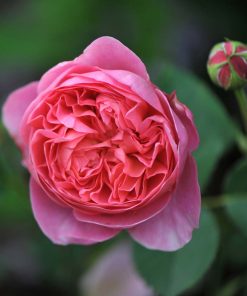Description
This exquisite floribunda rose is a true delight for any garden. Its large clusters of soft apricot blooms, with a delicate and alluring scent, are the perfect complement to its strong, bushy growth and glossy green foliage. Not only does it look stunning in the border, but it also makes for a charming and low-maintenance hedge, and can be potted for an elegant touch to your patio or balcony. Voted as Rose of the Year 2020, this rose boasts an exceptional resistance to disease, making it an easy and worry-free addition to any garden. And with its hybrid tea-like flowers, it’s not only beautiful to admire in the garden, but also a wonderful addition to any indoor floral arrangements.

















